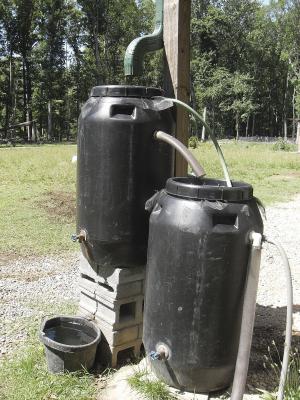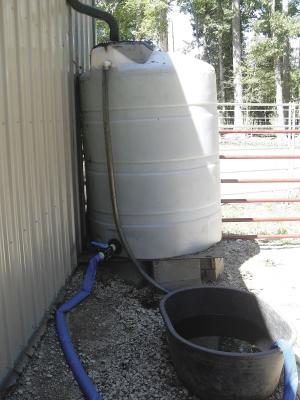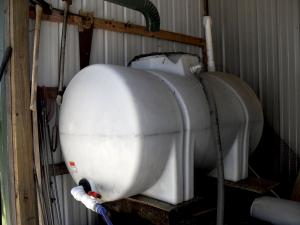2010 - Volume #34, Issue #4, Page #20
[ Sample Stories From This Issue | List of All Stories In This Issue | Print this story
| Read this issue]
Turning Rain Water Into Money
 |
 |
 |
"Putting in a deep well is very expensive, plus my entire house and farm are powered with solar energy," explains Childs. "Solar power is always an issue for deep well pumps. By collecting and using rainwater, I could get by with a shallow well and a solar powered pump."
While the shallow well would provide sufficient water for the house, Childs needed more for her goats, poultry and gardens. Rainwater was the answer. After considering underground tanks, she opted for multiple 55-gal. barrels and two poly tanks. The barrels were free from a local pickle processor.
Most were placed around the house and chicken coop. "They provide low pressure water," says Childs. "Even if you have to pay for them, you can buy a lot of barrels for the price of an extra, or deeper, well."
A 500-gal. tank and a 350-gal. tank collect rainwater from the barn roof. The larger tank is the main source for her goats, and because of its size, provides higher pressure water. The smaller one acts as backup. Some barn roof water is also collected in smaller barrels.
"I bought the 500-gal. tank at a farm supply store, but I got the 350-gal. tank free," says Childs. "I attended a couple of workshops and learned about fittings and overflows. It took me about a year to get everything working right. Finding and attaching fittings was the biggest challenge."
Most of the water goes for her 8-doe milking goat herd with kids. The rest is used for chickens and the garden. She uses hoses and gravity feed to deliver the water as needed. Currently she doesn't have the water system designed for potable water, though she is confident she could.
Childs says she has had no problems with her tanks, even when the temperature dips below freezing. On cold nights, she places ashes from her wood boiler beneath the fittings, and residual heat keeps them from freezing.
"I could collect even more water, but for my usage, I have enough," says Childs. "With regular rainfall, we have more water than time and energy to use it."
Contact: FARM SHOW Followup, Amy Tyler Childs, 6136 Herring Creek Rd., Aylett, Va. 23009 (ph 804 572-8045; chicksdairy@hotmail.com).

Click here to download page story appeared in.

Click here to read entire issue
To read the rest of this story, download this issue below or click here to register with your account number.




